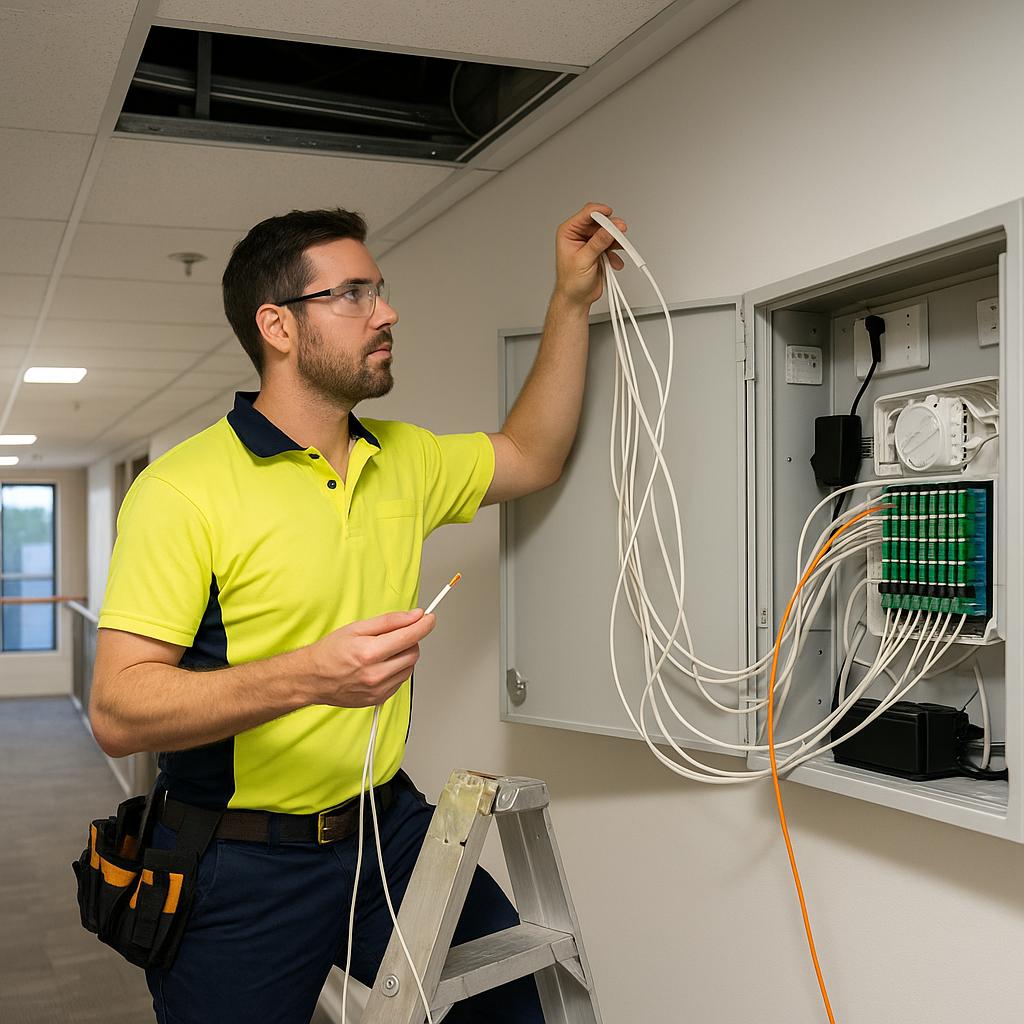G’day folks! If you’re like me, relying on a stable internet connection is absolutely critical. Whether you’re working from home, streaming your favourite show, or trying out the latest online game, the National Broadband Network (NBN) is the backbone of our online lives in Australia. But have you ever wondered how weather conditions impact NBN performance? Today, we’ll delve into how various weather conditions, especially here in South Australia, can affect your internet connection and what you can do to mitigate any disruptions.
The Basics of NBN Performance
The NBN is Australia’s premier broadband network, designed to provide high-speed internet access to millions of Australians. The network incorporates various types of technologies, including Fibre to the Premises (FTTP), Fibre to the Node (FTTN), Hybrid Fibre Coaxial (HFC), and more. Each of these technologies has its strengths and vulnerabilities, particularly when it comes to handling South Australia’s diverse weather conditions.
How Weather Affects Your NBN Performance
In South Australia, our weather can be unpredictable, to say the least. From scorching summer days that hit above 40 degrees to heavy winter downpours and the occasional thunderstorm, this varied weather can certainly impact NBN performance. Let’s break down how different weather conditions may affect your connection:
Impact of Heavy Rain and Storms
Mother Nature can put on quite a show, but when the heavens open and storms roll in, it can affect specific NBN technologies, particularly for satellite and fixed wireless connections. These connections rely on line-of-sight technology, and heavy rain or storm clouds can disrupt the signal.
Though fibre and fixed-line connections, such as FTTP or HFC, are less susceptible to atmospheric conditions, they may still experience disruptions due to water ingress into the infrastructure or power outages induced by severe weather.
Effect of Extreme Heat
We know South Australia can dish out the heat, and believe it or not, extreme heat can impact NBN performance. High temperatures can cause electronic equipment to overheat and malfunction, potentially disrupting your internet connection. It’s wise to ensure your home networking equipment is kept cool to maintain optimum performance.
Minimising Weather Impact on Your NBN Connection
So, what can you do to minimise the impact of weather on your NBN performance? Here’s a list of practical tips:
1. Secure Equipment Properly
Ensure your NBN equipment, including any external equipment like satellite dishes, is securely installed and protected against severe weather conditions. This can involve checking for water ingress or ensuring equipment is not exposed to direct sunlight.
2. Have Backup Options
Consider having a backup internet option, such as a mobile hotspot, particularly if you rely heavily on your internet connection for work or personal use. This can provide a temporary solution until your NBN connection is restored.
3. Keep Communication Lines Open
Stay informed by subscribing to alerts from your NBN service provider regarding outages or maintenance work. Knowing when an outage is a result of maintenance versus weather-related issues can save you a lot of frustration.
Technical Quality Measures of NBN Performance
Understanding technical quality measures can also provide insight into how certain weather events affect internet performance. Speed, latency, and packet loss are the key technical metrics that determine NBN performance. Here’s a quick overview:
Speed
NBN very high-speed services offer download speeds up to a whopping 990 Mbps, with upload speeds of up to 50 Mbps. While this sounds impressive during normal conditions, weather-induced outages can impact these speeds.
Latency
Latency refers to the delay before a transfer of data begins following an instruction for its transfer. Even when it’s pouring, latency on fixed wireless services has been recorded at around 43.4 milliseconds during all hours, which is sufficient for most everyday online activities.
Packet Loss
Packet loss occurs when units of data fail to reach their intended destination. High packet loss can ruin your streaming experience or interrupt a crucial video call. For the best experience, aim for minimal packet loss by ensuring equipment is up to date and weather-ready.
Improving Your Overall NBN Experience
Despite the challenges that weather can pose, there are ongoing efforts to improve the resilience and performance of the NBN infrastructure. Here are some key initiatives:
Network Upgrades
With continual upgrades, including the introduction of full-fibre connections to additional premises, the likelihood of weather-related disruptions diminishes. By advancing from FTTN to FTTP, many households will experience better NBN reliability, even during adverse weather conditions.
Future Speed Tiers
NBN Co is ramping up efforts to future-proof its services with new speed tiers aimed at meeting increased demand. Plans include the introduction of download speeds of up to 2 Gbps in the coming year, ensuring your connection can handle just about anything you throw at it.
Conclusion
In South Australia, while we may not be able to control the weather, we can certainly prepare for its impacts on NBN performance. By understanding the types of NBN connections, implementing best practices, and staying informed, you can maintain a stable internet connection even in the face of Mother Nature’s wrath. As the NBN continues to expand and improve, we can all look forward to a more resilient and high-performing network, rain, hail, or shine!



